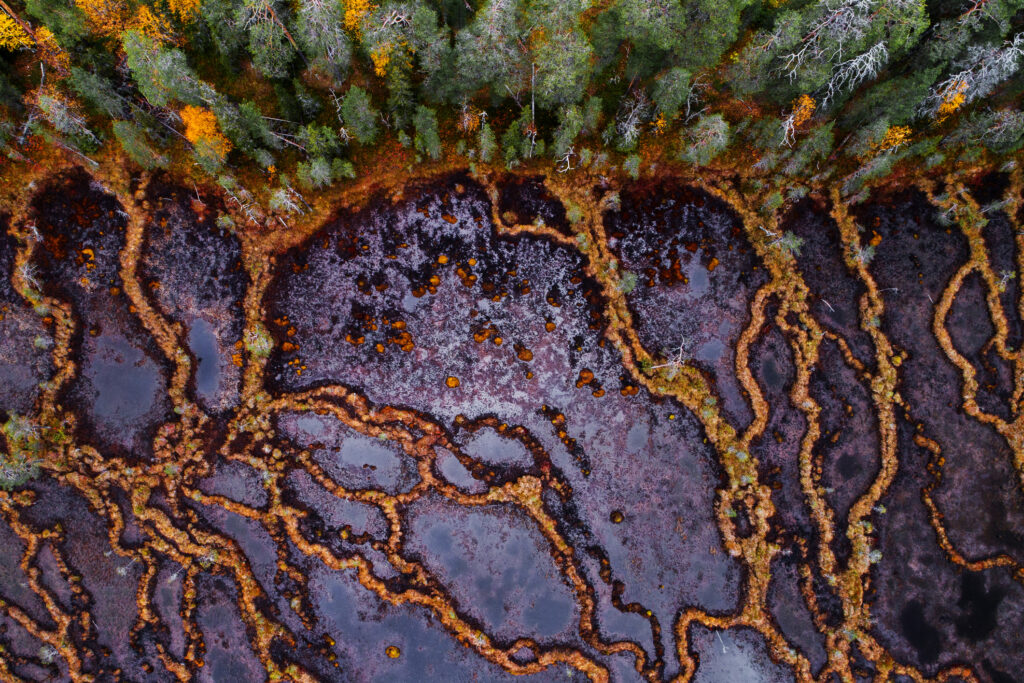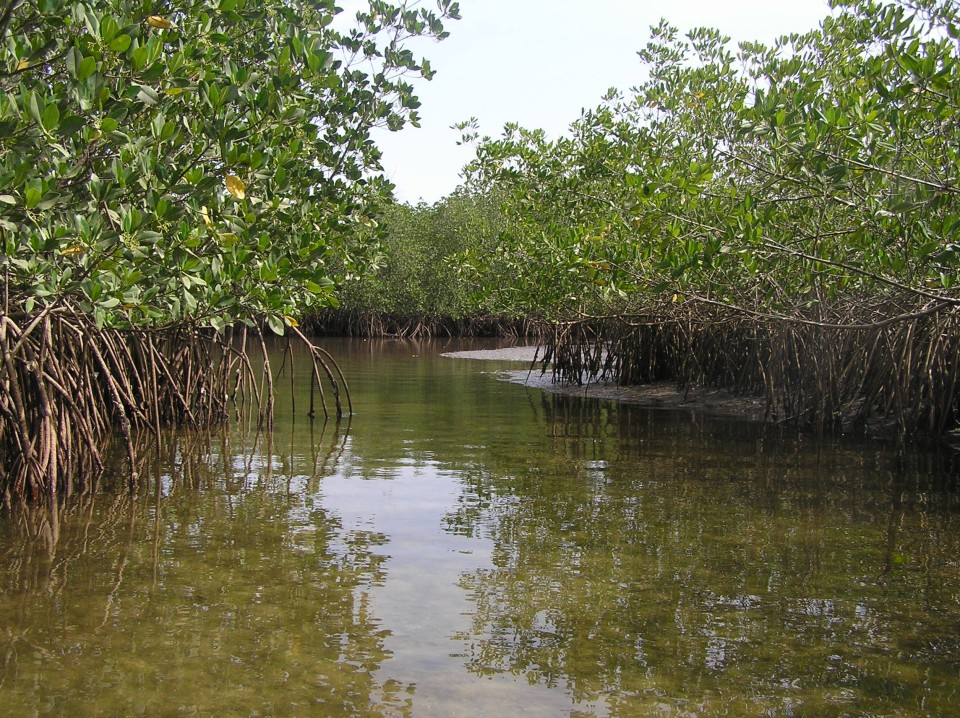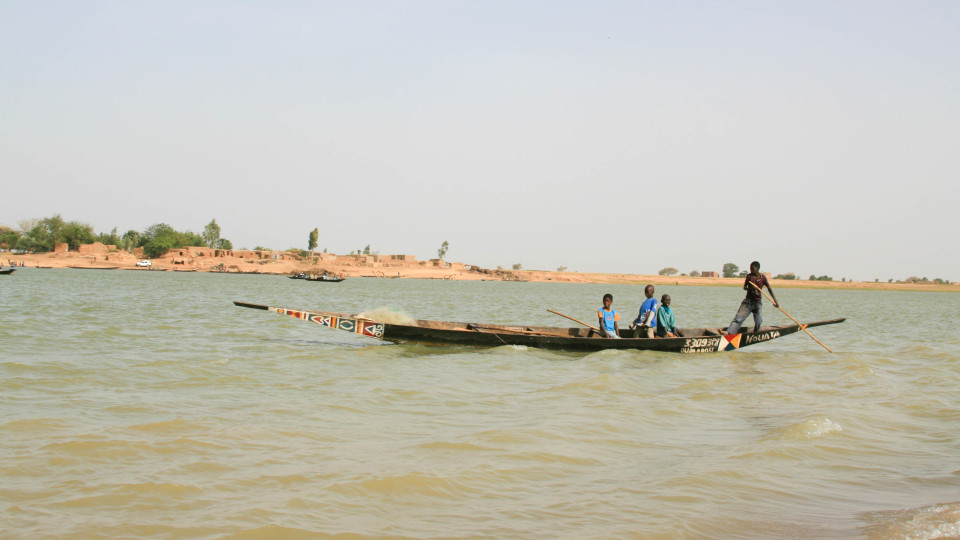
What Are Wetlands?
Wetlands occur where water meets land and ensure the sustainability of both

These unique habitats include mangroves, peatlands, rivers, lakes, deltas, seagrass meadows, and even coral reefs. Wetlands exist in every country and in every climatic zone, from the polar regions to the tropics, and from high altitudes to dry regions. Healthy wetlands store carbon, regulate the water cycle, and support 40% of the world’s biodiversity. They are central to achieving an equitable, net-zero emission, nature-positive world.
Wetlands are climate superheroes
Wetland flora are vital to both adaptation and mitigation. Mangrove forests and seagrass meadows protect shorelines from storm surges and sea level rise. Mangroves are also superheroes at capturing and storing carbon. It is estimated that they store four times more carbon than other tropical forests. Peatlands cover only about 3% of our planet’s land but store approximately twice the amount of carbon than all the world’s forests combined.
Conversely, the loss and degradation of wetlands exacerbates the climate crisis by releasing greenhouse gases and leaving ecosystems, and the people dependent on them, more vulnerable to the effects of climate change. By using wetlands wisely and diversifying livelihood options for local communities, it is possible to reverse the trend of wetland loss, poverty and inequity.
Wetlands are biodiversity havens
Wetlands support 40% of the world’s biodiversity from large predators like sharks and tigers to migratory birds and fish. They are also home to several endemic species, not found anywhere else on the planet, like mudskippers and the Indian bullfrog. It is also estimated that 200 new freshwater species are discovered annually in wetlands! Around 1 million animal and plant species are threatened with extinction worldwide, and a large number of them depend on wetlands for their survival.
By adjusting water and agricultural practices in wetlands and incorporating wetlands in agricultural landscapes, long term food security can be assured and biodiversity enhanced.
Wetlands ensure water security
Almost all of the world’s freshwater is drawn directly from wetlands. Wetlands play a crucial role in water purification, storage, and flood control. Peatlands act like sponges – absorbing excess water in times of heavy rainfall, and releasing it slowly in times of drought. Seagrass meadows and mangrove roots remove impurities and saline from seawater. Wetlands are so central to the water cycle, that a world without wetlands would be a world without freshwater. And unfortunately, the climate crisis is also a water crisis.
Competition between water for human consumption, agriculture and energy is intensifying. By improving water sharing and restoring wetlands, water supplies can be safeguarded.
Threats to wetlands ecosystems
Wetlands cover a small percentage of the earth’s surface, yet they are rich in nature and vital to human life. We have lost 35% of the world’s wetlands since 1970 and we continue to lose them at a rate faster than we’re losing forests. The loss and degradation of wetlands has a chain reaction, driving biodiversity loss, stressing food and water supplies, and exacerbating the impacts of floods, droughts and wildfires.
The biggest threat to wetlands comes from humans. We have lost vital wetland connectivity through dams, dykes, drains, ditches, and deforestation. They have altered the hydrology of wetlands, sometimes irreversibly so. Agriculture and infrastructure have been some of the main drivers of wetland loss.
But the good news is that the solutions to restore our degraded wetlands already exist. We know how to restore the hydrology of degraded wetlands, we know that finance must flow towards nature-based solutions, and we need to phase out harmful subsidies. We know that Indigenous People are integral to sustainable conservation and that all sectors must play their part. Businesses must be held accountable for their supply chains and governments must act on their promises.
At Wetlands International Europe, we have the expertise, experience, and knowledge needed to restore wetlands at scale, through landscape-level approaches in Europe and beyond.
Types of Wetlands
Peatlands
Peatlands are wetlands with a thick water-logged soil layer made up of dead and decaying plant material. Peatlands include moors, bogs, mires, peat swamp forests and permafrost tundra. Peatlands represent half of the Earth’s wetlands and cover 3% of the global total land area.
Peatlands absorb heavy rainfall, providing protection against floods, and release water slowly, ensuring a supply of clean water throughout the year. Peatlands contain twice as much carbon as the world’s forests.
Millions of people depend on peatlands for herding cattle, catching fish, and farming. Tropical peat swamp forests are home to thousands of animals and plants, including many rare and critically endangered species such as the orangutan and Sumatran tiger.

Rivers, lakes and deltas
A river is a natural watercourse, usually freshwater, flowing towards an ocean, a lake, a sea, or another river. Rivers originate as rain on high ground that flows downhill into creeks and streams. Deltas are found on the lower reaches of rivers, where the flow of water slows down and spreads out into expanses of wetlands and shallow water.
Rivers serve as important sources of drinking water, food and irrigation for crops. River waters also recharge lakes and transport fertile sediments that enrich floodplains and marshes.
Rivers and deltas provide critical habitat for fish and other freshwater animals such as amphibians and shellfish. They also play an essential role as highways for transportation and commerce and as sources of energy.

Mangrove Forests
Mangrove forests are among the most complex ecosystems on the planet, growing under environmental conditions that would kill ordinary plants very quickly. Mangrove forests are found in tropical and subtropical regions in tidal areas, which are frequently inundated with salt water. Strongly in decline, mangrove forests occupy about 15.2 million hectares of tropical coast worldwide: across Africa, Australia, Asia and America.
Mangrove forests provide protection and shelter against extreme weather events, such as storm winds and floods. Mangroves absorb and disperse tidal surges associated with these events: a mangrove can reduce the destructive force of a tsunami by up to 90%.
Mangrove leaves and roots provide nutrients that nourish plankton, algae, fish and shellfish. Mangroves also rival the carbon storage potential of rainforests.

Wetlands in dry regions
Arid and semi-arid areas are often characterised by seasonal rainfall and wetlands that retain water long after the rest of the landscape has dried out. These wetlands include rivers, swamps, lakes and springs that dry up for portions of the year. Dry regions are found in Asia, Australia, Africa, the Middle East and North and South America.
These wetlands are essential for farmers, pastoralists who graze animals, and the livelihoods of people who fish and collect plants.
They are also important to millions of waterbirds that breed in Europe and Asia, such as waders and herons.

High altitude wetlands
High altitude wetlands store water from rain and glacial melt, feed groundwater stores, trap sediments and recycle nutrients, enhancing both the quantity and quality of water.
These wetlands are important stopping points for migratory birds and breeding grounds for birds, fish and amphibians.
Their ability to promote vegetation growth lessens soil erosion and buffers water flow, providing a steady flow of water downstream while reducing the severity of disasters such as landslides, floods and droughts.

Arctic wetlands
Arctic wetlands store enormous amounts of greenhouse gases and are critical for global biodiversity. Peatlands, rivers, lakes, and shallow bays cover nearly 60% of the total surface area.
Arctic wetlands offer unique habitats to both plants and animals. For many migratory species the Arctic provides indispensable breeding and feeding areas.
Over four million people, including more than 30 different indigenous groups, live in the Arctic. People living in the Arctic depend on wetlands for fish and waterfowl hunting, harvesting of plants and as pastures for grazing.
Arctic wetlands contain enormous stocks of organic carbon in their soils, and are dependent on frozen permafrost for their ability to store carbon. As temperatures rise and the permafrost thaws, huge amounts of greenhouse gases may be released into the atmosphere.


